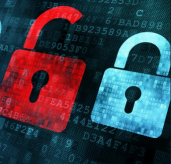Data Breaches Surge in 2014 with 200 Million Data Records Stolen

The Breach Level Index provides details about hundreds of individual data breaches, which can be sorted by source, industry, risk level, and date. Highlights from the first quarter research include:
• More than 254 data breaches were publicized, representing 200 million lost or stolen data records. Because of the varying strictness of data breach reporting requirements around the globe, this quarterly data does not include organizations that didn’t disclose the amount of data records that were exposed. In all probability, the total number is likely to be even higher.
• South Korea took the top spot of all countries with four of the top five breaches worldwide and a loss of 158 million records across a variety of industries. This represents 79 percent of the total number of reported breached records worldwide. These four breaches included the Korea Credit Bureau, Korean Medical Association, Korea Telecom, and Naver, a major Korean search portal.
While the number of South Korean breached records was extremely high, the number of breach incidents in Asia Pacific as a whole accounted for only 7 percent of the total number of global breaches, dwarfed by the 78 percent (199 incidents) that occurred in North America and 13 percent in Europe.
• The financial industry was hit hardest, accounting for 56 percent of all data records lost or stolen. However, it represented 14 percent of total breaches during the quarter.
• The healthcare industry was hit hard in terms of breach events, accounting for 24 percent of all breaches. However, the industry accounted for just 9 percent of data records lost or stolen.
• 20 percent of all records lost or stolen came from the technology industry, while retail represented just 1 percent of data records lost or stolen and 10 percent of all data breaches, even including the Sally Beauty Supply breach, which made major headlines.
• Government and education breaches accounted for less than 1 percent of total records stolen and 23 percent of data breaches, including the University of Maryland’s breach of 287,000 records stolen early this year.
• Malicious outsiders accounted for 156 (62 percent) of total incidents during the first quarter, with over 86 million records stolen. Malicious insiders only accounted for 11 percent of total incidents, but they were much more effective, accounting for 52 percent of records stolen. Accidental loss represented 25 percent of total incidents, while hacktivist and state-sponsored attacks added up to only 2 percent of the total.
• There were approximately three breaches and 2.2 million records stolen each day, and more than 93,000 per hour.
About the Breach Level Index
The BLI provides a centralized, global database of data breaches and calculates their severity based on multiple dimensions, including the type of data and the number of records stolen, the source of the breach, and whether or not the data was encrypted. By assigning a severity score to each breach, the BLI provides a comparative list of breaches, distinguishing nuisances from truly impactful mega breaches. Information populating the BLI database is based on publicly-available breach disclosure information.




